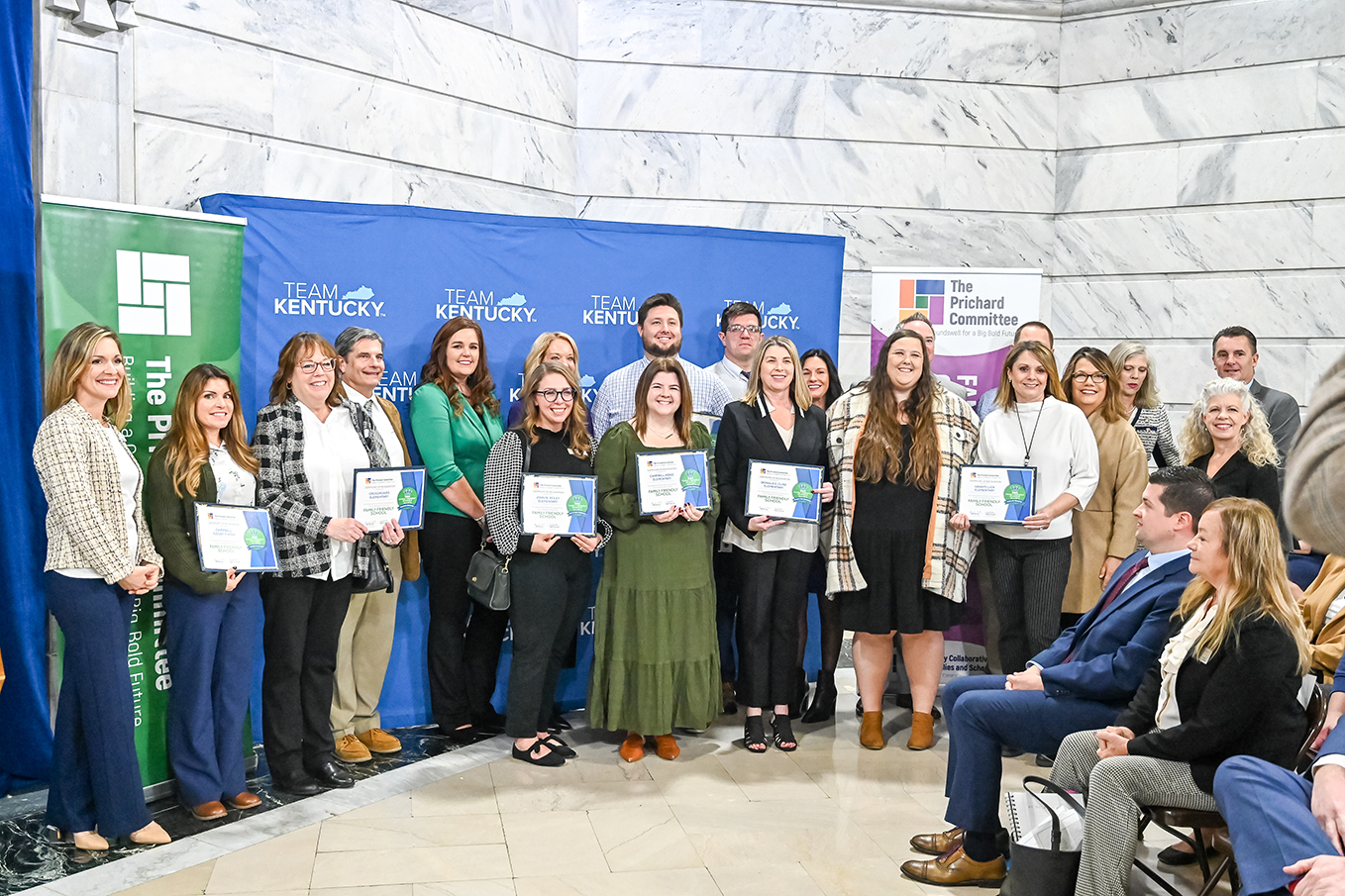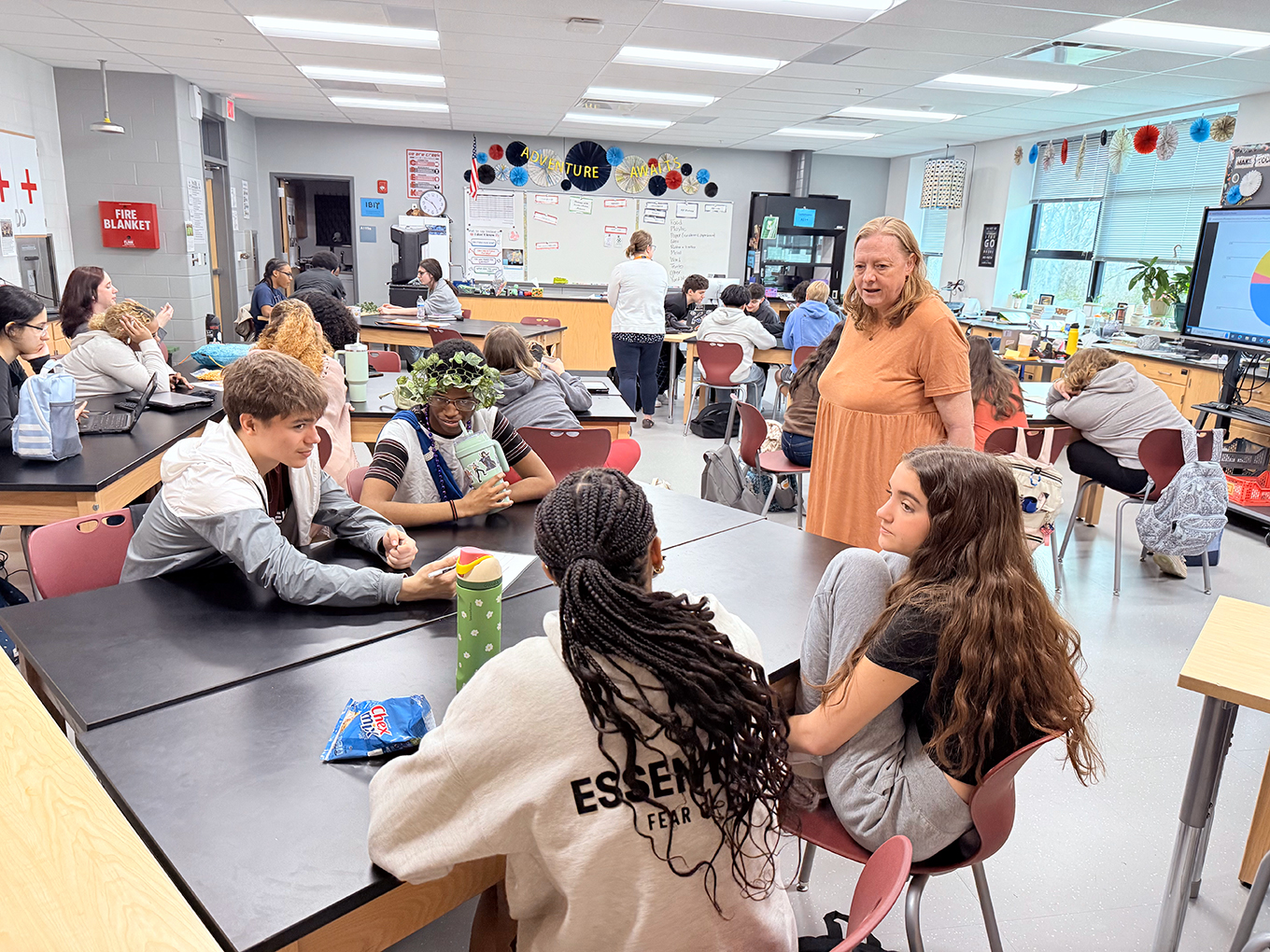
Stacy Bewley
Imagine the perfect day in your classroom. What comes to mind? Flawlessly executed lesson plans? Well-behaved students? High levels of achievement? Student engagement? Is one of these more important than the others?
While lesson planning, classroom management and mastery of content are significant at every level, I think most teachers would agree that student engagement is the key ingredient to the perfect school day.
But how do we define student engagement? In reality, true student engagement is a multi-layered combination of the student, the teacher, the learning environment and the content. Though consistently achieving high levels of student engagement may seem as elusive as a perfect day, with intentionality, it is within the reach of classroom teachers.
John Hattie of the Visible Learning website and authors Robert Marzano, Debra Pickering and Tammy Heflebower of “The Highly Engaged Classroom,” suggest that teachers should examine each lesson from the students’ lens. The authors recommend that teachers consider four questions from the students’ perspective:
- How do I feel?
- Am I interested?
- Is this important?
- Can I do this?
Planning with these questions in mind increases the likelihood of student engagement in the classroom.
How do I feel?
In Visible Learning, Hattie claims that student achievement from previous years has a significant impact on student learning in our classrooms. That makes sense, right? But Hattie continues, “Our job as teachers is to mess this up, by planning ways in which to accelerate the growth of those who start behind.” We can do this, in part, through responsive teaching and adjusting the pacing of instruction.
Our students’ emotional states, motivation levels, interest and other outside stressors all play a part in learning. While we can’t control much of what students bring to the classroom in terms of emotions, we can control the climate of the instructional setting, which plays an important role in how students feel when they enter our classrooms. If we are successful in considering the following, our students are safe to learn, to make mistakes and to grow.
- Pacing and Transitions – Establish clear, practiced routines and include frequent opportunities to discuss the learning. Conduct frequent formative assessments in order to determine and respond to student needs.
- Physical Movement – Incorporate physical movement into the day to infuse energy, to create physical representations of the content (i.e. vote with your feet, human graph), and to respond to questions. Movement helps students reset their brains and refocus their attention.
- Intensity and Enthusiasm – Teachers set the tone in the classroom and in each lesson. Our excitement, energy and positive attitudes (or lack thereof) are contagious.
- Humor – Funny news clips, headlines, quotes and personal anecdotes are potential material to introduce learning or help students make connections.
- Building Positive Teacher-Student Relationships and Student-Student Relationships – Establish a safe, respectful classroom climate where students can expect to be accepted and treated fairly.
Am I interested?
Students encounter a constant stream of information competing to enter into their sensory, working or permanent memory. Marzano, Pickering and Heflebower write that each memory stage varies in purpose, with information being stored in the sensory stage temporarily, in the working stage a bit longer to give students time to process, and in permanent memory as stored experiences.
Where information is ultimately stored is directly connected to the level of interest. Here are a few tactics to build interest in a lesson.
- Using games and inconsequential competition – Utilize flexible grouping so that students are not always working with the same peer(s), and ensure that not everything is graded. Sometimes we just want students to engage in the learning without the pressure of a grade.
- Initiating friendly controversy – Consider using a class vote, debate or town hall to encourage students to take a side and defend a claim. Asking students to assume a different position than their own also can deepen their understanding of information.
- Presenting unusual information – Use current events, fun facts and guest speakers to pique student interest.
- Questioning to increase response rates – Call on students randomly so they are poised to participate, increase wait time after questions and utilize simultaneous individual responses (response cards, whiteboards, technology, etc.).
Is this important?
Our students want to know that what we are teaching them is important in their lives. Whether it be a connection to a real-world problem or directly tied to their college and career goals, establishing the importance of the content is a critical piece of the learning experience for students. Some of the ways we can do this are discussed below.
Connecting to Students’ Lives
- Comparison Tasks – Encourage students to consider physical characteristics, processes, timelines, cause-and-effect relationships, psychological characteristics, fame or notoriety to help them develop deeper understanding of the content. We can incorporate comparison tasks into a variety of content, including language arts (i.e. character and plot analyses), humanities (i.e. musical and artistic styles, period timelines), social studies and science.
- Connecting to Students’ Life Ambitions – Give students choice in research projects, reading content and assessment to increase ownership in their learning. Perhaps learners could research a career of interest to them, places they might like to visit or live, or the cost of living independently.
Encouraging Application of Knowledge
- Cognitive Challenges – Present students with opportunities to engage in decision making, problem solving, experimental inquiry and investigation. Directly involving students in activities designed to develop critical thinking results in deeper understanding of the content.
- Choice – Provide options for tasks, products, goals and behavior. We can often be proactive in maintaining student engagement by allowing them to choose the order in which to complete tasks, providing a menu of options for a completed project (i.e. create a PowerPoint, write a commercial, design a book jacket), letting them contract for a grade based on work completion and/or difficulty of task, and involving students in setting expectations for classroom behavior.
- Present Real-World Applications – Ask students to generate ideas for real-world problems and provide a structure for the process of creating possible solutions. Engaging students in this way builds their understanding of community resources and protocols and develops critical thinking and problem-solving skills.
Can I do this?
This is perhaps the most important of Marzano, Pickering and Heflebower’s questions, for if the answer is “No,” everything else is of little value. It is critical for us as classroom teachers to build the self-efficacy of our students, to teach them to set goals, monitor their own progress, and to identify their strengths and areas of growth.
Hattie defines self-efficacy as the confidence students have in their own abilities to make learning happen. Many of our students will need our help in building this confidence, particularly when developing persistence and overcoming academic or personal obstacles. Teachers can foster self-efficacy skills by incorporating practices which encourage students to reflect on their learning.
- Tracking student progress – Allowing students to track their data over time in data notebooks and including them in academic and behavioral goal-setting increases their ownership and efficacy. A visual graph of their reading fluency improvement or math fact mastery may be a more powerful tool than verbal feedback or a grade on a paper.
- Using Effective Verbal Feedback – Provide timely, specific feedback to students, focusing on strengths and areas of growth. Teacher feedback should serve to encourage, guide and challenge students to improve their performance on a given task. If we are to positively impact student achievement through feedback, we have to deliver it promptly, while ideas are fresh and changes can be made.
- Providing Examples of Self-Efficacy – Sometimes students need to be reminded of their own previous successes in order to persevere through a difficult task or a plateau in their progress. Another way to encourage students is through the personal stories of others’ trials and dedication to attain a goal.
- Teaching Self-Efficacy – We have the chance to tear down fixed mindsets and reframe negative thoughts by modeling reflection and analysis of our own strengths and opportunities for growth, and providing students with the framework and space to do the same.
In ”Research Proof Points–Better Student Engagement Improves Student Learning,” veteran teacher Kathy Dyer writes that researchers have studied the relationship between engagement and achievement for decades, establishing student engagement as a predictor of achievement, desirable classroom behaviors and graduation rates. The stakes are high. Lack of engagement comes with a high cost – one we simply cannot afford to pay.
Stacy Crawford Bewley is an education recovery specialist with the Kentucky Department of Education. She is a former high school special education teacher with 13 years of classroom experience. Bewley taught English and reading in both the resource and collaborative settings. She is a fellow of the Louisville Writing Project and is completing doctoral coursework at the University of Louisville.




Leave A Comment